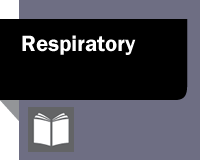2022 HME Business Handbook: Respiratory
Outcomes- and Value-Based Care For The Respiratory HME
- By Zach Gantt
- Jun 01, 2022
 Patient outcomes
are rapidly emerging as a
powerful growth strategy. In fact,
with large referrals and payers it’s
becoming a requirement. Collecting
patient-focused measures and
transforming that data into
clinical metrics is the key to
success in the respiratory HME
model going forward. Elite HMEs
combine compliance information
with respiratory outcomes, often
using software to become strategic
partners for referrals.
Patient outcomes
are rapidly emerging as a
powerful growth strategy. In fact,
with large referrals and payers it’s
becoming a requirement. Collecting
patient-focused measures and
transforming that data into
clinical metrics is the key to
success in the respiratory HME
model going forward. Elite HMEs
combine compliance information
with respiratory outcomes, often
using software to become strategic
partners for referrals.
U.S. healthcare delivery is
rapidly changing with emerging
managed care initiatives, accountable
care organizations, and other
value-based care models. Hospitals
want to be complete systems to
maintain every penny of the
healthcare dollar; physician groups
can drive quality and revenue
with aligned home providers; and
payors are struggling to learn how
to manage homecare patients,
especially the 12 percent that drive
60 percent of the spending.
The intersection of these
trends for chronic respiratory
disease patients is in the home.
Implementing outcome-based
programs transforms the HME
from being seen as an equipment
supplier to a home-based pulmonary
service partner. Managing
patients — not just devices —
creates opportunities. The question
is, how do you “own the home”
before your competition beats you?
Respiratory management software is
the new model the industry is moving
toward, especially for patients on
advanced therapies like ventilation. The
key to a successful transition to these
models is adding sophisticated clinical
metrics on top of device compliance
results. These clinical metrics measure
goal performance, objective data, and
sometimes most importantly, subjective
data like self-management skills or
symptom management.
These goals and metrics need to be
translated into patient language and
need to communicate progress in an
overall plan of care. For respiratory
therapists, asking “how do you feel”
questions at the point of care isn’t
enough. They must collect scaled
answers via software to standardize
them and to understand the changes
from initial visits to ongoing visits.
Software also enables patient answers
to be tied to actions and instructions
and to prompt physician interventions.
Additionally, a database can be used
to analyze results and identify hidden
relationships that drive better outcomes.
HOME OXYGEN PATIENT OUTCOMES
HME providers have an existing population
of oxygen and nebulizer patients
who will eventually need advanced
therapies like Non-Invasive Ventilation
and Airway Clearance devices. Due to
reimbursement cuts over the years, these
O2 and Neb patients are just provided
with equipment and never clinically
managed.
Creating a model to clinically manage
these patients is key to identifying when
these patients need other services the
HME offers. HME providers can build
these models themselves, or there are
now services that combine the support
of a Respiratory Navigator-staffed call
center that assess patients and integrates
the sophisticated outcome-based algorithms
to manage the disease progression.
The data algorithms from these
brief and continual clinical calls measure
patient engagement, identify gaps in
care for physician follow-up, and detect
increased clinical impairments that lead
to advanced therapies such as non-invasive
ventilation and high-frequency chest
wall oscillation.
THE CHALLENGE
The challenge with moving into these
models is RT staffing and clinical leadership
shortages, and the biggest challenge
is the need for a strategic shift
in the business model. This creates the
question of how do you get started
moving into an outcome-focused model?
First, you must decide to build it internally
or outsource it to a turn-key partner
with expertise in value-based care. More
and more HME providers are making the
decision to partner with experts in care
coordination and population health to
stand up a sustainable model without
having to recreate the wheel.
Whether an HME decides to build
it internally or outsource a clinical
outcomes model the need to standardize
clinical management, risk, and data still
exists to play in the value-based world.
This presents an opportunity to create
unique strategic partnerships with
Physicians, Hospitals, and Payers.
POINTS TO REMEMBER
- Patient outcomes are emerging
as a powerful growth strategy for
Respiratory HME Providers.
- Tracking outcomes means thinking
outside the box and managing
“beyond the box” or managing
beyond the device.
- Outsourcing clinical management
models to organizations already
engaged in population health
models will accelerate the strategy.
- Value-based care is about reducing
utilization and improving outcomes;
both can be achieved by matching
the right patient to the right therapy
at the right time.
LEARN MORE
To learn more about Encore Healthcare, visit encorehc.com.
This article originally appeared in the May/Jun 2022 issue of HME Business.
About the Author
Zach Gantt, RRT, FAARC is the CEO of Encore Healthcare. Gantt has two decades of experience in post-acute outcome-based models and founded Encore with a vision of radically transforming how care is delivered in the home for chronic respiratory patients.